The Tube has been transformed in recent years thanks, in no small part, to Bombardier’s innovative trains and Transport for London (TfL) will doubtlessly be hoping the New Tube for London (NTfL) project will bring about an equally significant change.
Bombardier hopes to win the contract, and firmly believes it has the capability and capacity to deliver what would be the biggest deal of its kind, and one that is set to revolutionise the London Underground network.
This project is a matter of necessity, not vanity, for London. The Capital is growing rapidly. By 2031 there will be an extra 1.8 million people living and working there. Every three days, about 800 people move to London - slightly more than the average Tube train capacity, by coincidence.
By the 2020s the Bakerloo, Central, Piccadilly and Waterloo & City lines will be operating some of the oldest trains and signalling on the Tube. These combined factors have steered TfL’s approach to the development of a programme for a comprehensive modernisation of these ‘Deep Tube’ lines.
There is strong and growing demand across the whole TfL rail network, including the Tube, London Overground, Docklands Light Railway and the trams, so the new Tube trains will need to address the need for ongoing increases in ridership and service frequency, with technology requirements not just for today, but for decades to come. On December 4 2015, LU carried 4.821 million passengers on the Underground - the most in one day. That week was also the busiest in the Tube’s history, with 28.76m passenger journeys. That beat the previous total of 28.69m, which itself was set in the week ending October 31 2015. Additionally, TfL says that 18 of its 20 busiest days ever on the Tube network occurred last year. The second busiest was November 27 2015, with 4.795m, while third was October 9 2015 with 4.375m. Fourth was November 28 2015 with 4.734m while fifth was October 29 2015 with 4.719m passengers.
These figures illustrate the sheer scale of growth in usage. Overall, demand has risen by a third since 2001, with the rate of growth accelerating significantly in the past five years.
Nick Brown, LU’s managing director, said: “The Tube continues to break records for the number of customers it’s carrying, as London’s economy and population keeps on growing. The vast majority of the busiest days in the Tube’s 152-year history have been recorded this year .
“The current work to improve London Underground is one of the largest programmes of infrastructure investment in the world. We will continue to invest all our income in modernising the service, improving reliability, train capacity and frequency, and upgrading major stations to provide a Tube network fit for the capital city it serves.”
Already trains run more frequently and reliably on the Victoria Line, where Bombardier’s 2009 stock has helped TfL to increase the number of trains per hour from 32 to 36 this year.
Overall, because of the modernisation on the Tube network, TfL claims that journeys are now quicker, that there is an average reduction of around two minutes per journey and that delays have decreased by 40% in recent years.
TfL says: “Further upgrades are ahead, with new air-conditioned trains now serving the Metropolitan, District, Hammersmith & City and Circle lines, new signalling planned for those lines, and the radical modernisation of the Central, Piccadilly, Bakerloo and Waterloo & City lines in the 2020s. Major work on the Northern Line extension to Battersea started in November 2015, which will support thousands of new jobs and homes and enable major regeneration in the Vauxhall, Battersea and Nine Elms areas.”
TfL has highlighted the ongoing priorities regarding the Tube which fall into four categories: safety and reliability, maximising capacity from the existing network, growing the network and meeting the growing expectations of its customers by providing excellent customer service.
The aim will be to achieve a steady state of renewal, where modernisation is a continual process that is built into the everyday operations of TfL.
The first line to be rejuvenated under the New Tube for London programme is expected to be the Piccadilly Line.
TfL admits the Edwardian-era tunnel infrastructure presents a massive challenge to the planned NTfL modernisation programme. The tunnels were not designed to dissipate increasing levels of heat from traction energy, leading to a steady rise in tunnel and station temperatures since the lines opened in the early-1900s (see feature on pages 100-103).
Bidders will be expected to address these constraints while introducing air cooling and other features expected by today’s passengers. Such challenges are compounded by the confined Deep Tube infrastructure which includes 3.5m diameter bored circular tunnels, cast iron tunnel linings and the line topography. The tight curvature of some track sections in the central London areas reflects the arrangement of the street plan above ground. The fixed length platforms and their depth below ground, as well as struggling ventilation systems, will also have an impact on what can be achieved from a capacity enhancement point of view. However, TfL believes bespoke and unique applications for key assets such as rolling stock can get results.
Talking about the NTfL scheme, Bombardier Head of Bids Engineering Niall Simmons says: “This project is for the Deep Tube rather than sub-surface lines. And, therefore, it requires some unique technical solutions associated with both the design and operation.”
So what are the constraints? Is it a case of Bombardier looking at the products it has on the network currently, the Victoria Line which runs in the Deep Tube and the sub-surface S-Stock that has air-conditioning, and fitting the latter’s capabilities in the former? Essentially the answer is yes, but there’s a lot more to it than that.
Says Simmons: “These trains have to fit into ten foot four tunnels.
“As you know, S-Stock has air conditioning on the roof and wide gangways. I’ve got a picture that shows that a Victoria Line train would fit inside an S-Stock train. So the roof space isn’t available for Deep Tube vehicles. As an engineer you have to be very innovative in terms of where you locate equipment and how you locate it, while still making it reliable. There’s an art in doing that. We’re in a fortunate position. We know the characteristics of the infrastructure. And we understand how it is operated.”
This experience is garnered from the Victoria Line and S-Stock fleets. Says Simmons: “We know the infrastructure very well from the years of testing and operation of our trains on it, and from studying the feedback for these vehicles. It isn’t through luck that the S-Stock and Victoria Line fleets have been made so reliable.
“The most important consideration for the design and manufacture of the NTfL fleet will be to ensure that - even after the incorporation of cutting-edge technology and novel features - the vehicles are extremely reliable from day one.”
Because of its experience, Bombardier is confident of achieving that goal. It has the experience of the LU network that, arguably, its rivals do not. The last non-Bombardier-built trains were delivered to London Underground in 1995 - 21 years ago, and during that time a lot has changed.
Simmons says of the NTfL deal: “The project stipulates articulated vehicles. We have experience of producing them across the world. TfL wants high passenger capacity, so it’s also about optimising space in the vehicle. That is where our global experience of articulation can and will help Bombardier.”
He says: “London Underground wants to move as many people as it can with maximum efficiency, and without increasing tunnel temperatures. At the same time, passenger comfort must be improved.”
This must also be done while making the experience pleasurable for the passengers. The design is vital to this, says Simmons. “TfL are looking for an iconic design for this particular train. They’re thinking about the passenger environment and about maximising capacity. This project will represent an engineering challenge, but Bombardier has gained two million engineering hours of experience working on TfL projects, which we aim to use.”
The number of vehicles will, of course, also dictate the capacity offered. The formations will vary, according to the maximum platform length on each of the lines set to receive new trains.
Martin Rennoldson, Group Account Director at Bombardier, says of the varying train lengths: “There are a lot of variable factors affecting how you boost capacity and we have to solve that equation with an optimal solution.”
Infrastructure will play a part in train size. The Central Line can take trains larger than the Piccadilly, while the line with the smallest clearances is the Waterloo & City. Yet the same train must be able to run on all of them.
Can Bombardier increase the size of trains that are operating in terms of what’s in use now? Can they be designed to be larger or are they at their limits? Simmons explains: “We’re looking at massively optimising the usable space within the vehicle. And that comes down to clever design.” When he says ‘useable space’, what does he mean? “In the roof area, in the saloon, in the ends themselves, and in the design of the cab,” he says.
Rennoldson elaborates: “It’s about the whole approach to the design of the vehicle interior - ensuring that space for passengers is maximised.”
There is also experience from Bombardier’s worldwide portfolio. Simmons explains: “Because we’ve got people movers across the world, we’ve got driverless trains across the world. Because of the high levels of reliability that must be achieved, we’re using techniques from the aircraft industry to look at how we can predict when failures are going to occur so that they don’t actually occur on the network - or at all.” Reliability requirements will be exceptional right from delivery.
When it comes to the NTfL contract, TfL stipulates: “higher performance capability is a core feature of a train system upgrade, and one which has been achieved on several Underground lines over the past two decades.”
The NTfL feasibility stage has investigated provision of ‘more novel features’ for Tube trains. It envisages that: “additional capacity is provided with improved configurations, including walk-through rather than separate carriages, creating more floor area as compared with traditional designs. Passengers can easily transfer between carriages meaning they can distribute throughout the train, avoiding busier carriages where possible. This in turn, will help to reduce dwell times as a more evenly loaded train enables quicker boarding and alighting, passengers can move through the train so they are in the optimal section of the train at their destination station, thus reducing the time spent exiting the system. The provision of a more continuous open space within the vehicle improves security and reduces the opportunity for anti-social behaviour.”
TfL recognises that “the provision of through gangways on a Tube train with traditional configuration is very difficult, if not impossible, due to the dynamic behaviour of the vehicles. Tight curves, in particular, lead to large relative movements between vehicles ends. This means an inter-car gangway would not be possible without removing doors at the end of the carriages, due to the length of the gangway which would be required.”
It has, however, “identified that it is possible to provide an inter-car gangway by altering the Tube train design so that the relative vertical and lateral movement of the carriage ends can be significantly reduced. This enables a shorter, wide gangway to be fitted without loss of train capacity or a reduction in the number of doors. The re-positioning of the bogies allows all train doors to be double doors. Double doors allow for rapid access, which reduces dwell times. Controlling dwell times becomes a dominant factor for achieving high frequency service levels, due to reduced intervals between trains.”
Returning to the issue of reliability, Rennoldson is keen to point out Bombardier’s testing plans: “We are looking at investing in further testing facilities in the UK and we’re also looking to make additional investments in our bid to win this contract.
“This further investment would be crucial, because we need to run the trains extensively for long periods. Reliability will continue to be a key issue for new train projects, so we’re looking on this as an opportunity to prepare for the future and we feel that it’s a facility worth developing and investing in.”
If Bombardier’s bid is successful, the trains will be built in Derby. Rennoldson points out: “They will be designed in the UK as well. We’re the only firm that can claim that a huge proportion of the engineering and design work will be done here.”
Bombardier is also aligned with the way that TfL works. The industry has changed it says, and for the better, for example enabling suppliers to engage with their customer to gain feedback at an earlier stage. “We’ve been working on this for four years, and that experience has been priceless,” says Simmons. “It’s allowed us to work closely with the client and to scour the globe to ensure we understand the very best and latest technology so we know what is possible from the customer now, and what could be possible in the future.
“We’ve spent the last two years looking at TfL’s requirements from the ITT and making further suggestions as part of their early supplier engagement. TfL understands that the supply chain has a lot to offer, and we know the Tube and rolling stock very well,” says Simmons.
Knowledge of TfL’s requirements and delivery of its current, high performance rolling stock is inherently advantageous to Bombardier, as Simmons explains: “This long term relationship has been invaluable in growing our experience.”
As Bombardier has looked to push reliability levels even higher, so it has looked at how it might adjust some of its key systems to ensure even better durability going forward, rather than go through the risky and more expensive process of designing certain components from scratch. “Going through those learning curves is a big part of how we grow our experience,” says Simmons.
So, is it fair to say that NTfL will be more of an evolution than a ‘fresh start’? It may be a case of developing components of existing trains to the next stage, but it doesn’t necessarily feel like TfL is starting again. S-Stock was something of a transformation, whereas this time TfL is taking S-Stock, taking VLU, taking what’s on the Jubilee Line and making that into the NTfL concept.
Simmons agrees, and says: “TfL takes a holistic view of the railway and doesn’t just focus on the rolling stock. So upgrading signalling systems, control centres and stations can speed up passenger flow and the train is one part of that system.”
Eventually LU will go to overnight running on certain routes, which will make the window of opportunity for maintenance even smaller. Bombardier understands that and wants to make the train low-impact on the infrastructure. Simmons elaborates: “The trains will have to be lighter, more track-friendly and more energy efficient, and we have already developed much of the technology to achieve that. We set the bar high with S-Stock, and there are a lot of passenger features TfL would probably want to see included in the new Deep Tube stock.
“For us it’s an evolution, but for other suppliers it would take more of a revolution. We’re building on things we know work. Everybody buys our bogies for use in the global market - and for good reason.”
Bombardier knows how to make reliable Tube trains too. S-Stock trains are now achieving 110,000 kilometres between failures. Simmons says: “Because we’ve been developing S-Stock reliability levels, we have a headstart in terms of increasing reliability. Now, instead of it taking 12 months to perfect an improvement, we’re going to build that improvement into these trains before they even enter service. We follow a very structured System Engineering approach to the design of our vehicles and our mature processes allow us to have confidence that the product will perform well on day one.”
Rennoldson adds: “With modern trains and all their systems, you have to do more system testing anyway. We’re increasing our investment in developing ways of testing these system designs.”
Is that because passengers expect more from what they’re doing these days? Simmons points out: “Customers want much more reliable trains. They want cleaner trains, they want faster trains. We have to create trains that passengers will really want to travel on, with as many seats as possible.”
But is seating so important for the Tube? Journeys are, typically, short so fewer seats and more standing space is the answer, surely? Simmons explains: “Seats are important for London Underground. Most other places in the world have rigid plastic seats. But seats are incredibly important from a comfort perspective for TfL. NTfL will still feature strong, cushioned seats with its distinctive, time-honoured moquette.”
The look of the train is crucial. TfL issued a design that it wants bidders to work with. The ‘face’ of the cab, for example, is of great importance because it’s part of LU’s brand identity. And TfL wants this heritage to be respected. Simmons explains: “It’s really passionate about the level of comfort on its vehicles and retaining an iconic design inside and out.”
No matter who builds the trains, retaining brand identity is a condition of the deal. Simmons elaborates: “Although the number of seats isn’t a factor, maintaining the style and comfort level is mandatory. And that’s true across all TfL trains.” TfL, Bombardier acknowledges, “is really proud of its brand.”
“LU took great care in presenting their brand vision to us and all the other bidders. That included interior materials, and some of the colours or patterns you associate with London Underground.”
NTfL will revolutionise the Tube in a bigger way than even the S-Stock and VLU did. Bombardier has the experience of those projects. It’s poised to use that in shaping the future of the Tube, too.
- This feature was published in RAIL 793 on February 3 2016.


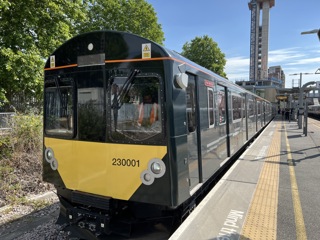
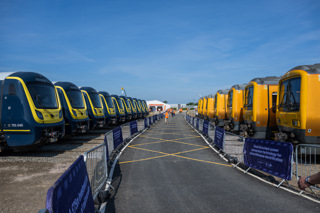
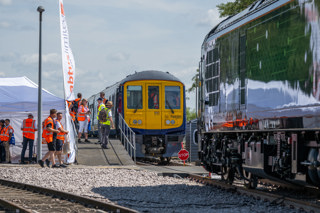
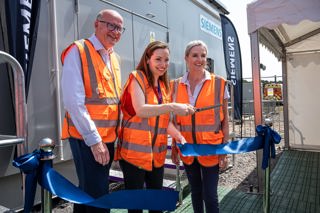
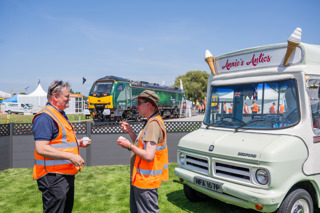











Login to comment
Comments
No comments have been made yet.